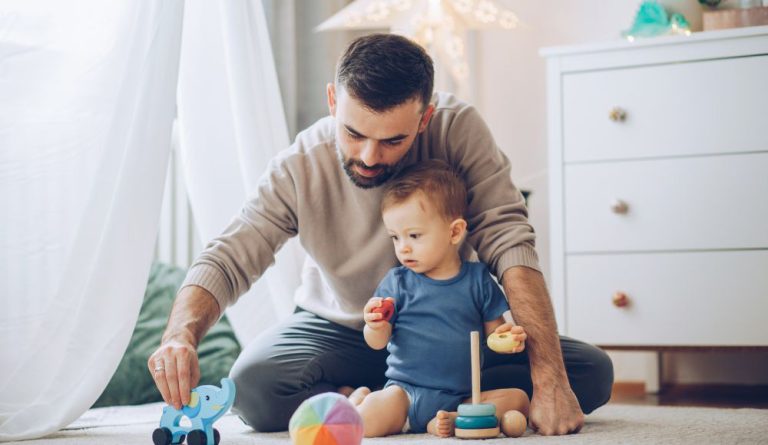OOliteracy Milestones Series: Preschoolers 3-4 Years Old
Curious about what to expect with your preschooler’s growing literacy skills? Discover literacy milestones for children 3-4 years old and how to encourage their growing language skills and love for stories.

Interactive play, hands-on experiences, and storytelling provide a brilliant blend for early learners. These ingredients are how parents and caregivers can create a rich literacy environment that enhances vocabulary and comprehension and instills a love for books and learning.
This blog will delve into the key literacy milestones for preschoolers 3-4 years old, offering practical tips and simple activities to enrich your child’s learning journey.
Younger Preschooler Literacy Milestones: Ages 3-4 Years Old
Simple, everyday activities can make a significant difference in fostering a love for reading and developing essential language skills. From sharing stories and singing songs to playing with alphabet blocks and creating with crayons and paints, these activities provide rich opportunities for preschoolers to engage with language in meaningful ways.
Encouraging your child to participate in these playful and educational experiences helps them develop vocabulary, comprehension, and fine motor skills, setting a solid foundation for future literacy.
The following section will explore various fun and practical activities that parents and caregivers can incorporate into their daily routines to support their child’s literacy journey.
| Literacy Milestones | 3-3.5 Years | 3.5-4 Years |
|---|---|---|
| Explores books independently. Understands print concepts such as cover, front, back, title, words, and pages. | ✔ | |
| Enjoys listening to and talking about picture books, sometimes retelling parts of a story and talking about characters from favourite stories. | ✔ | |
| Able to identify names of a few letters and numbers and recognize them in different fonts in the environment and in books. | ✔ | |
| Begins to participate in sorting and matching shapes and some colours. | ✔ | |
| Participates in simple sorting and matching activities with size, shapes, and colours. | ✔ | |
| Begins practicing turn-taking. | ✔ | |
| Understands that writing is different than drawing a picture. | ✔ | |
| Will typically have a vocabulary of 1000+ words. Uses pronouns and some plurals. | ✔ | |
| Pretends to read, turn pages, and use pictures to tell the story from memory or create a new one. | ✔ | |
| Engages in play with basic story elements. | ✔ | |
| Begins to recognize their name in print and other commonly seen words or familiar signs and logos. | ✔ | |
| Starts matching letter sounds to letters (like knowing s makes a /s/ sound). | ✔ | |
| Pretends to write messages on paper, involving scribbles and symbols (lines, circles or other shapes) that represent writing. | ✔ | |
| May begin noticing rhyming words. | ✔ | |
| Grasps the concept of fundamental opposites, such as hot vs cold, hard vs soft, and fast vs slow. | ✔ |

Activities To Build Preschooler Literacy Skills – Ages 3-4
At this stage, children are naturally curious and eager to explore the world around them, making it the perfect time to introduce activities that promote language, reading, and writing skills.

Singing songs, playing simple word games, and reading stories and poetry aloud.

Exposing preschoolers to different types of books, counting books, non-fiction, wordless picture books, classic stories, etc.

Using animated voices and expressions to make stories come alive. Also, pausing to ask questions about the story and encouraging your preschooler to make predictions about what might happen next.

Describing things using descriptive elements, including textures, temperatures, shapes, sizes, colours, and quantities. Also putting language to everyday events and emotions.

Drawing attention to the features of printed letters, such as lines and curves, and showing different font types.

Exposing preschoolers to letters of the alphabet through the use of magnetic letters, alphabet blocks, or letter puzzles.
Focusing on letters in their name.

Practice brief turn-taking, such as rolling or throwing a ball back and forth, waiting to get a turn on the swing, and taking turns blowing bubbles.

Pointing out rhyming words in nursery rhymes, books, and poems and also playing around with rhyming words during regular daily activities.

Keeping various writing, drawing, painting, and art materials handy and regularly available.
Making time for creating simple art crafts together.

Using words to describe where things are, such as ‘over’, ‘in’, ‘under’ and ‘next to’.
Nurturing Little Minds, Sparking Big Dreams

I’m happy you’re here!
Hi, I’m Julie, the passionate creator of Ox & Owl Literacy. I enjoy empowering families and educators with wonderful resources to inspire fun, imaginative, and joyful learning opportunities for young kiddos. You’ll find lots of recommended books, reading resources, and creative learning activities on this site aiming to help children fall in love with language, books, reading, and the transformational power of stories.









